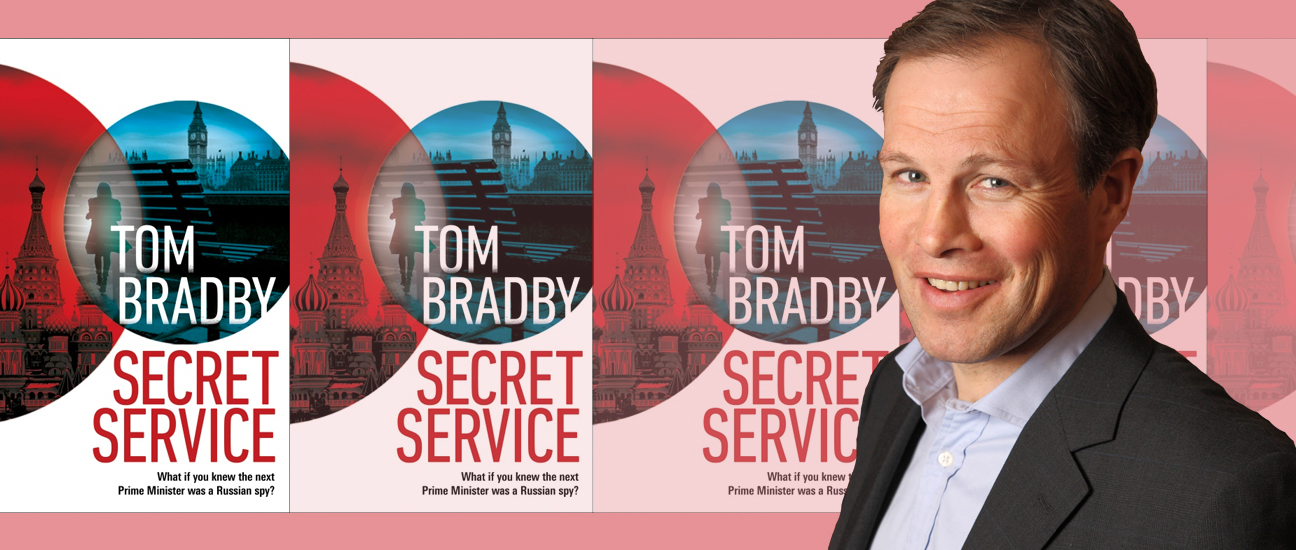- Home |
- Search Results |
- Broadcaster and author Tom Bradby on how to finish the first draft of your book
Broadcaster and author Tom Bradby on how to finish the first draft of your book
Thriller writer Tom Bradby shares his working process, from pen on paper to publication, and why all writers should know that teamwork is key.

How do you reach your first draft, and what comes next? How important is the role of the editor in the process?
This is like one of those exam questions to which you feel like answering ‘a lot more pain’ and leaving it at that. But the truth is that every stage of the writing process has its immense pleasures and its teething pains and, seven novels in, I guess I am getting used to it. I do have one piece of advice for any aspiring writer, though; if you are a genius relax and get on with it, but for the rest of us success is about team work.
I suppose it starts for me, as it always has, in discussions with my wife, Claudia, who has really been my writing partner for twenty-five years. We talked about the characters and plot of my first novel, Shadow Dancer on honeymoon (which was a month long, to be fair) and we have discussed the major aspects of every novel in some depth since before I have set pen to paper. As well as being a great editor, she is brilliant at story and character development. So she is really my first set of eyes in the process.
Next, I will normally send something like half a novel to my agent, Mark Lucas. Mark is himself a former editor and he is a bit of a genius, even if I don’t like to tell him that. In the early days, his tutelage was somewhat brutal to take, because he was constantly confronting me with the aspects of my work that just did not make the grade and directing me back to the great thrillers of the past – The Silence of the Lambs, Presumed Innocent, Gorky Park – in an attempt to focus my mind on how and why these brilliantly structured novels seemed to just rip by with wonderful characterisation and context at every turn.
To give you one example of what this meant in practice, it is easiest to focus on one of the major structural flaws in the early drafts of Shadow Dancer. The basic idea – of an MI5 officer trapping a woman IRA terrorist and mother and bullying her into working for him – had potential right from the start, but the problem stemmed from my decision to tell it from the perspective of both sides (clear and consistent points of view was the subject of an early Mark tutorial). Once recruited, the terrorist Collette returned to her family and the IRA and it was fairly easy to create tension straight away. The more she betrayed them, the more they suspected her.
The difficulty was on the other side of the equation. What was the MI5 officer doing when he was not meeting her? I tried everything. I gave him a love interest, then a broken heart. I gave him some complicated family back story. But he still seemed to be twiddling his thumbs too much of the time. I considered resorting to solely Collette’s perspective, but I thought that might limit me in other crucial ways.
With each new draft, I had a new solution. And each one seemed to annoy Mark a little more, until I got back one page in which he had written in red pen in the margins; yes, but the trouble is, he is a w****r and this is going nowhere.
I withdrew wounded and depressed. Maybe I was never going to make this bloody novel work. And then, as so often in thrillers when you seem to be really stuck, I came up with what felt like a game-changing idea; to give MI5 another, more important agent in the IRA whose identity they have kept secret from him. So as the novel wears on, he begins to realise he was only asked to recruit Collette in order that his bosses have someone to throw out to the tout hunters when they get to close to their original informant. Which of course begs the question; who is he, or she?
From that moment on, the novel really took off and that kind of process – perhaps with a little less impatience in the red pen strokes – has characterised our editorial relationship.
But however hard you have worked together, there comes a point when Claudia, Mark and I have taken a novel just about as far as we can. The truth is, as with anything, we have squeezed every last drop from our collective imagination. This is where my publisher Bill Scott-Kerr enters the equation. A brilliant and somewhat legendary editor (he seems to have a knack for finding bestsellers), Bill comes onboard when the novel is relatively well-formed but still in need of a little more fizz.
He is forensic, creative and supportive. Like Mark, his ideas are always good and he is injecting them into the mix at a time when we really need them. His fingerprints are all over my latest novel Secret Service, right from the very first page (he thought my original opening was not quite kinetic and gripping enough, so we went back to the drawing board and thought again). Some of his notes are small – he has a great eye for detail – and some big, but they often make the difference between a narrative that works okay and one that really flies.
I am so used to working closely with other people in my day job in television news that I perhaps take it for granted, but the same rules apply; unless you are a genius, teamwork is everything.